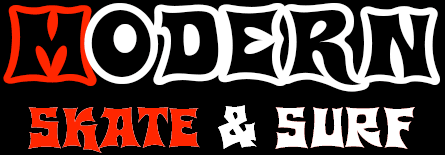Inline Skates Braking Systems and Maintenance
Types of Inline Skate Brakes
Types
When it comes to brake systems on inline skates, you will find one of three types on any given inline skate: Traditional, Advanced Braking (ABT), or no brake at all.
The traditional type of inline brake is positioned at the back of the skate, behind the last wheel on the chassis. If you’re familiar with the design of a roller skate, this position is quite different as it requires the use of your heel instead of your toe. No matter the brand K2 or Rollerblade brakes will be found in this traditional positioning.
An advanced braking system, more commonly referred to as an ABT brake, is also positioned on the back of the skate, in the same place as a traditional brake would be. The difference between this type of brake and the aforementioned traditional braking type is that it utilizes a braking arm that runs behind the skate boot. ABT was invented by Rollerblade and is a system primarily found on Rollerblade Brakes.
Each of these types of brake systems are explained in further detail below, but here is a visual comparison on each of these brake systems to give you an idea of what I am describing above.
Traditional Brakes
A traditional brake system is the most common type of brake, found on nearly every recreational and fitness skate. The brake itself is essentially a hard rubber pad that is attached to a plastic holder that is fastened to the back of one of the inline skates via the axle on the rear wheel. Typically, the brake will come attached to the right skate, but is often interchangeable between skates. This is done so that left-foot dominant skaters can switch the brake to the left skate.
The traditional braking system works by angling the braking skate in an upward fashion and thus forcing the heel, and subsequently the brake, to the ground. The friction that is created between the ground and the brake pad allows you to slow yourself down. The more pressure you apply, the quicker you will stop. For a more in-depth review of the braking process, please review our article on How to Brake on Inline Skates.
ABT Brakes
The ABT braking system was introduced by skate manufacturer Rollerblade in the mid 1990s, and is found exclusively on Rollerblade brakes and Bladerunner brakes. Typically, this system is used only on their entry-level inline skates, as it was developed to help beginners gain confidence with braking on their skates.
To activate the ABT braking system, the skater positions the braking skate forward. This positioning will place both rearward and downward pressure on the cuff of the skate, which is connected the braking arm of the ABT system. When pressure is applied, the braking arm is activated, which pushes the brake pad against the ground. The difference between this system and the traditional braking system is that it does not require the skater to tilt their skate. Instead the ABT system allows the skater to keep all four wheels on the ground and remain balanced.
As an additional side note to brake pads, it is important to know that brake pads themselves are available in marking and non-marking styles. Most indoor skating rinks do not allow marking brakes due to the marks the Rollerblade brakes leave on the skating surface. Therefore, it is recommended that you find a non-marking brake if you plan on skating indoors. This will allow you to avoid this issue altogether.
No Brake
Although this may seem to be suicide to beginner and novice skaters, many skates do not offer a braking system. While it may not be common on beginner recreational or fitness skates, aggressive skates, roller hockey skates, and speed skates are just some of the skate styles that do not offer a brake system.
The reason for this is that brake systems on these types of skates tend to get in the way of performance. You may be wondering how these skaters stop. In order to stop, these skaters use a method commonly referred to as a T-Stop. The concept of a T-Stop is simple, as it requires that you simply take one skate and position behind the other in a perpendicular fashion. The skate that you position behind the other is entirely up to you, but once you have positioned it there, you simply drag it behind you until you have slowed.
(Original article from inlineskates.com)
CHECK OUT THE INLINE SKATES THAT MODERN SKATE AND SURF OFFERS HERE!
